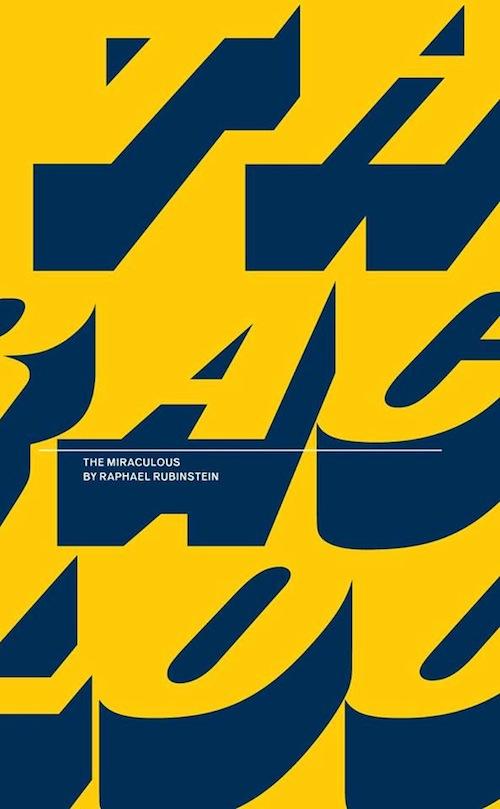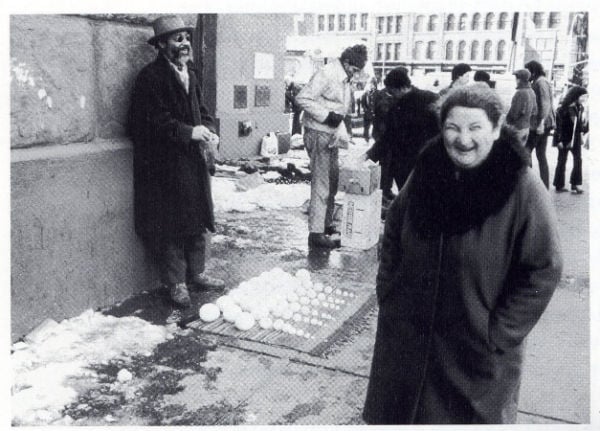Reviews
‘The Miraculous,’ a Book About Art That Is a Work of Art Itself
Raphael Rubinstein's new book revitalizes contemporary art history.

Raphael Rubinstein's new book revitalizes contemporary art history.

The Miraculous is a miraculous little book. I know that’s a corny way to start this review, but I think you can risk corniness in cases where you have something unqualifiedly positive to say. We live in a golden age of artistic angst, which has its uses, but also inevitably leads one to wonder why one bothers with the topic in the first place. Raphael Rubinstein’s slim volume of art history is the only book I’ve read recently of any kind that makes me remember why you might want to write about the vexing, shape-shifting phenomenon we call contemporary art.
The book is published by Paper Monument, a journal/literary venture that specializes in finding quirky new niches in art writing (previous tomes include I Like Your Work, a book of art etiquette tips). The conceit of The Miraculous is simple and can be summed up in two sentences: Rubinstein, a poet and critic and former editor of Art in America, presents capsule biographies of 50 artists of the recent past, sketching in a few compact lines their biography, their mode of operation, inspiration, and achievement (most are one page; none go over three). He just tells their stories without mentioning their actual names.
Thus, you hear the tale of one artist’s 11-month quest to shake hands with everyone at the New York City Sanitation Department. Or the painter who achieves success after deciding to restrict herself to a limited vocabulary of 276 symbols. The shortest entry, number 39, is a single sentence: “To a musical accompaniment, an artist makes a salad.” Some of the works described are iconic, like the Japanese artist who sits in front of a crowd and asks onlookers to shear away her clothing with scissors she has provided; some are new to me, like the Frenchman who, as a work of art, set up and staffed a functioning ad agency in New York. (An index allows you to hunt down the names; here they are Mierle Laderman Ukeles, Jane Hammond, Alison Knowles, Yoko Ono, and Philippe Thomas.)
Rubinstein’s gesture is so elemental, yet for me it has the effect of a drop of soap in greasy water, all at once reorganizing the entire visible surface. What the book makes me realize is how often, within the art industry, what you are actually seeing and consuming is the name.

David Hammons, Bliz-aard Ball Sale, Cooper Square, New York (1983)
All the figures described are the heirs of a certain lyrical strain of post-1960s, post-conceptual thinking about art. Writing at the beginning of that period of the increasingly disorienting intercalation of art and life, Arthur Danto explained, “To see something as art requires something the eye cannot descry—an atmosphere of artistic theory, a knowledge of the history of art: an artworld.” Within a certain delimited sphere, each individual artist could define the rules of the game for him or herself. Hence the importance of names, as shorthand for the universe of discourse each has produced. If you don’t “get” what you are seeing, you look down at the wall label to see who made it.
The Miraculous makes me realize how, in my head, I have come to hold Danto’s idea of an “artworld” up as the cancellation of “lifeworld,” by which I mean the larger universe of human interests. Precisely because anything can be art, whatever inscrutable artifact or quirky outrage I am presented with, I always preemptively assume that its ultimate motivation was mainly to be art, an ascription that tends to reduce whatever non-art energies are in it to simulations of themselves. The contemporary art world is, in many ways, an eccentricity-generating machine; and thus, all that appears under its sign bears the stigma of the publicity stunt, of the artist’s professional quest to build a brand.
Well, there’s definitely something to that line of thinking; but it is also probably granting the art industry too much power, and when you strip art of the brands, which is the point of Rubinstein’s book, you see these other existential energies better. It may be true that David Hammons’s 1983 gesture of selling snowballs on a blanket in Cooper Square (entry 29 in The Miraculous) was meant as “a Duchampian comment on the art object.” But that’s not why it’s lovable or interesting; it is also just a sly, wacky, subversive thing for someone to do. If you knew Hammons, you would recount his day selling snowballs to all your other friends with relish.
In tone and content, Rubinstein’s book reminds me of Italo Calvino’s Invisible Cities, which describes the rituals and geographies of a series of fantastical fictional urbanisms: Zenobia, a desert city set atop stilts; Eutropia, made up of multiple towns, only one inhabited at a time. By far that book’s most affecting passage comes at the end, when Calvino’s narrator contemplates an atlas containing the maps of all possible cities, and reality returns: “there is a city in the shape of New Amsterdam known also as New York,” he writes, “crammed with towers of glass and steel on an oblong island between two rivers, with streets like deep canals, all of them straight, except Broadway.”
In that moment you suddenly see that reality actually sounds as improbably fantastic as any fiction, though you had to leave reality in order to arrive back at that conclusion. Rubinstein’s book is all the more excellent in that it achieves the same effect, but starts from reality itself, with the lives of contemporary artists sounding like characters in a story that they have created for themselves. (Indeed, if the most satisfying moment of Invisible Cities is when Calvino returns to reality, the mild disappointment of The Miraculous is to realize that at least one of its entries is actually a fictional person, though I see this has its purpose.)
The Miraculous is a history of a certain way of making art, of figures who embrace some self-generated ritual and then see how its ripples radiate out through reality and reorganize the experience of it. That is a description that obviously applies also to Rubinstein’s book itself, with its simple protocol. In that sense The Miraculous is both a chronicle and incarnation of contemporary art’s potentials, the rare creation whose form is perfectly in concert with its content.